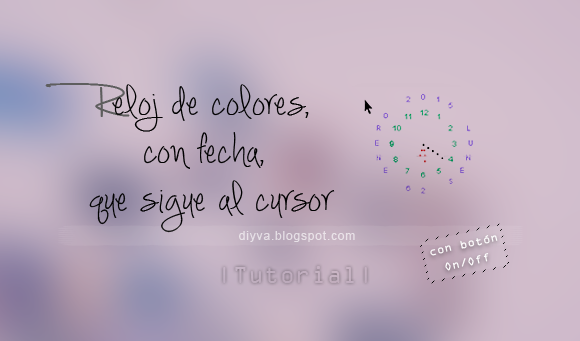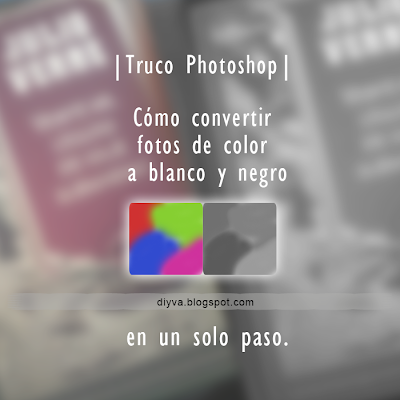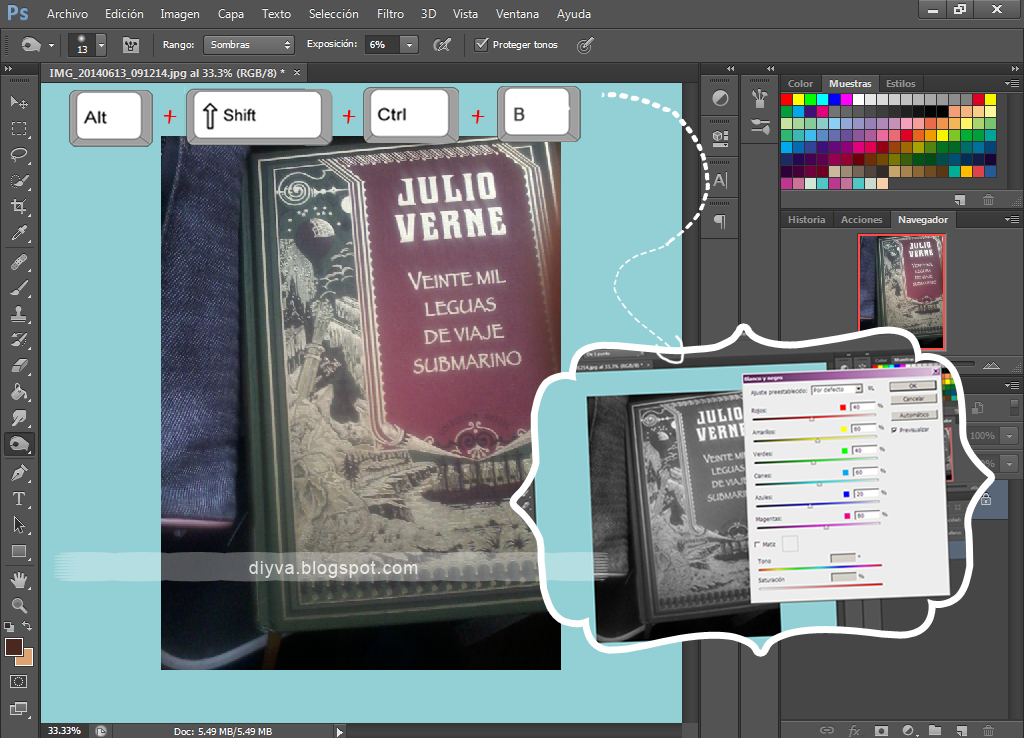En tutoriales anteriores hemos visto varios efectos para los cursores (
estrellas que caen,
burbujas que suben,
explosión de estrellas y
humo que sale del cursor).
Hoy vamos a ver otro efecto, que consiste en un reloj colorido con fecha y hora, que sigue al cursor cada vez que lo movemos. Además, es totalmente personalizable y opcionalmente podemos agregar un botón para activar o desactivar el reloj.
( ↪ Ver DEMO)
Para agregar el reloj sigue estos sencillos pasos:
1.§ Vamos a Plantilla - Editar HTML.
2.§ Damos un clic dentro del código, luego CTRL+F y en la casilla
search buscaremos
</head> y justo antes de éste, pegaremos los siguientes estilos:
<style type='text/css'>
.css1{
position:absolute;top:0px;left:0px;
width:16px;height:16px;
font-family:Arial,sans-serif;
font-size:16px;
text-align:center;
font-weight:bold;
}
.css2{
position:absolute;top:0px;left:0px;
width:10px;height:10px;
font-family:Arial,sans-serif;
font-size:10px;
text-align:center;
}
#control{ /* estilos del botón */
background: #e2e2e2; /* color de fondo */
color: #000; /* color del texto */
border: 1px #66CCCC solid; /* ancho y color de borde */
border-radius: 10px; /* redondeo de esquinas */
}
</style>
3.§ Debajo de los estilos pegaremos el siguiente script. En este código podemos modificar los colores del reloj, la fecha y las manecillas:
<script type='text/javascript'>
//Efecto reloj en el cursor
//diversas y variadas
// <![CDATA[
if (document.getElementById&&!document.layers){
dCol='#339999'; //color fecha.
fCol='#000000'; //color números.
sCol='#000000'; //color manecilla segundos.
mCol='#339999'; //color manecilla minutos.
hCol='#339999'; //color manecilla horas.
del=0.6; //Velocidad a la que sigue el reloj al cursor.
ref=40;
var ieType=(typeof window.innerWidth != 'number');
var docComp=(document.compatMode);
var docMod=(docComp && docComp.indexOf("CSS") != -1);
var ieRef=(ieType && docMod)
?document.documentElement:document.body;
theDays=new Array("DOMINGO","LUNES","MARTES","MIERCOLES","JUEVES","VIERNES","SABADO");
theMonths=new Array("ENERO","FEBRERO","MARZO","ABRIL","MAYO","JUNIO","JULIO","AGOSTO","SEPTIEMBRE","OCTUBRE","NOVIEMBRE","DICIEMBRE");
date=new Date();
day=date.getDate();
year=date.getYear();
if (year < 2000) year=year+1900;
tmpdate=" "+theDays[date.getDay()]+" "+day+" "+theMonths[date.getMonth()]+" "+year;
D=tmpdate.split("");
N='3 4 5 6 7 8 9 10 11 12 1 2';
N=N.split(" ");
F=N.length;
H='...';
H=H.split("");
M='....';
M=M.split("");
S='.....';
S=S.split("");
siz=40;
eqf=360/F;
eqd=360/D.length;
han=siz/5.5;
ofy=-7;
ofx=-3;
ofst=70;
tmr=null;
vis=true;
mouseY=0;
mouseX=0;
dy=new Array();
dx=new Array();
zy=new Array();
zx=new Array();
tmps=new Array();
tmpm=new Array();
tmph=new Array();
tmpf=new Array();
tmpd=new Array();
var sum=parseInt(D.length+F+H.length+M.length+S.length)+1;
for (i=0; i < sum; i++){
dy[i]=0;
dx[i]=0;
zy[i]=0;
zx[i]=0;
}
algn=new Array();
for (i=0; i < D.length; i++){
algn[i]=(parseInt(D[i]) || D[i]==0)?10:9;
document.write('<div id="_date'+i+'" class="css2" style="font-size:'+algn[i]+'px;color:'+dCol+'">'+D[i]+'<\/div>');
tmpd[i]=document.getElementById("_date"+i).style;
}
for (i=0; i < F; i++){
document.write('<div id="_face'+i+'" class="css2" style="color:'+fCol+'">'+N[i]+'<\/div>');
tmpf[i]=document.getElementById("_face"+i).style;
}
for (i=0; i < H.length; i++){
document.write('<div id="_hours'+i+'" class="css1" style="color:'+hCol+'">'+H[i]+'<\/div>');
tmph[i]=document.getElementById("_hours"+i).style;
}
for (i=0; i < M.length; i++){
document.write('<div id="_minutes'+i+'" class="css1" style="color:'+mCol+'">'+M[i]+'<\/div>');
tmpm[i]=document.getElementById("_minutes"+i).style;
}
for (i=0; i < S.length; i++){
document.write('<div id="_seconds'+i+'" class="css1" style="color:'+sCol+'">'+S[i]+'<\/div>');
tmps[i]=document.getElementById("_seconds"+i).style;
}
function onoff(){
if (vis){
vis=false;
document.getElementById("control").value="Prender reloj";
}
else{
vis=true;
document.getElementById("control").value="Apagar reloj";
Delay();
}
kill();
}
function kill(){
if (vis)
document.onmousemove=mouse;
else
document.onmousemove=null;
}
function mouse(e){
var msy = (!ieType)?window.pageYOffset:0;
if (!e) e = window.event;
if (typeof e.pageY == 'number'){
mouseY = e.pageY + ofst - msy;
mouseX = e.pageX + ofst;
}
else{
mouseY = e.clientY + ofst - msy;
mouseX = e.clientX + ofst;
}
if (!vis) kill();
}
document.onmousemove=mouse;
function winDims(){
winH=(ieType)?ieRef.clientHeight:window.innerHeight;
winW=(ieType)?ieRef.clientWidth:window.innerWidth;
}
winDims();
window.onresize=new Function("winDims()");
function ClockAndAssign(){
time = new Date();
secs = time.getSeconds();
sec = Math.PI * (secs-15) / 30;
mins = time.getMinutes();
min = Math.PI * (mins-15) / 30;
hrs = time.getHours();
hr = Math.PI * (hrs-3) / 6 + Math.PI * parseInt(time.getMinutes()) / 360;
for (i=0; i < S.length; i++){
tmps[i].top=dy[D.length+F+H.length+M.length+i]+ofy+(i*han)*Math.sin(sec)+scrollY+"px";
tmps[i].left=dx[D.length+F+H.length+M.length+i]+ofx+(i*han)*Math.cos(sec)+"px";
}
for (i=0; i < M.length; i++){
tmpm[i].top=dy[D.length+F+H.length+i]+ofy+(i*han)*Math.sin(min)+scrollY+"px";
tmpm[i].left=dx[D.length+F+H.length+i]+ofx+(i*han)*Math.cos(min)+"px";
}
for (i=0; i < H.length; i++){
tmph[i].top=dy[D.length+F+i]+ofy+(i*han)*Math.sin(hr)+scrollY+"px";
tmph[i].left=dx[D.length+F+i]+ofx+(i*han)*Math.cos(hr)+"px";
}
for (i=0; i < F; i++){
tmpf[i].top=dy[D.length+i]+siz*Math.sin(i*eqf*Math.PI/180)+scrollY+"px";
tmpf[i].left=dx[D.length+i]+siz*Math.cos(i*eqf*Math.PI/180)+"px";
}
for (i=0; i < D.length; i++){
tmpd[i].top=dy[i]+siz*1.5*Math.sin(-sec+i*eqd*Math.PI/180)+scrollY+"px";
tmpd[i].left=dx[i]+siz*1.5*Math.cos(-sec+i*eqd*Math.PI/180)+"px";
}
if (!vis)clearTimeout(tmr);
}
buffW=(ieType)?80:90;
function Delay(){
scrollY=(ieType)?ieRef.scrollTop:window.pageYOffset;
if (!vis){
dy[0]=-100;
dx[0]=-100;
}
else{
zy[0]=Math.round(dy[0]+=((mouseY)-dy[0])*del);
zx[0]=Math.round(dx[0]+=((mouseX)-dx[0])*del);
}
for (i=1; i < sum; i++){
if (!vis){
dy[i]=-100;
dx[i]=-100;
}
else{
zy[i]=Math.round(dy[i]+=(zy[i-1]-dy[i])*del);
zx[i]=Math.round(dx[i]+=(zx[i-1]-dx[i])*del);
}
if (dy[i-1] >= winH-80) dy[i-1]=winH-80;
if (dx[i-1] >= winW-buffW) dx[i-1]=winW-buffW;
}
tmr=setTimeout('Delay()',ref);
ClockAndAssign();
}
window.onload=Delay;
}
// ]]>
</script>
Si buscas otros
colores para el reloj y el botón, te puede servir
este post.
3.§ Damos clic a
Guardar plantilla y ya podemos ver el reloj funcionando en el blog.
PASO OPCIONAL: BOTÓN
Con los pasos anteriores, el reloj ya estará funcionando. Sin embargo, podemos incluir un botón On/Off para que nuestros lectores decidan desactivar o activar el reloj cada vez que lo requieran. Sólo debemos hacer lo siguiente:
1.§ Vamos a Diseño - Añadir un gadget - HTML/Javascript.
2.§ En la ventana emergente del gadget, insertaremos el siguiente script:
<script type="text/javascript">
if (document.getElementById&&!document.layers){
document.write('<input type="button" id="control" value="Apagar reloj" onClick="this.blur();onoff()">');
}
</script>
3.§ Damos clic a guardar y listo.
Si incluyes el reloj en tu blog, házmelo saber con un comentario y tienes alguna duda no dudes en preguntar para ayudarte. Y no olvides visitarme en mis redes sociales.




















